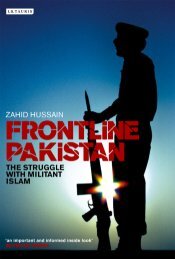Who Owns Pakistan - Yimg
Who Owns Pakistan - Yimg
Who Owns Pakistan - Yimg
Create successful ePaper yourself
Turn your PDF publications into a flip-book with our unique Google optimized e-Paper software.
According to Lawrence White, top seven of 13 banks nationalized in 1974<br />
accounted for 60% of bank deposits but if foreign and govt banks were excluded<br />
then their share came to 90% of the total. Four of the top seven banks were<br />
owned by 22 families. These were Habib Bank (Habib), United Bank (Saigols),<br />
Australasia Bank (Colony) and Premier Bank (Arag).<br />
Z A Bhutto made a serious effort to level off the credit facilities over as big a<br />
segment of population as possible by creating Credit Consultative Committee<br />
which apportioned credit to business and industry, directing it inot areas where<br />
would be shy because of commercial reasons, and by opening of new bank<br />
branches in the rural areas.<br />
However his efforts were handicapped by the absence of a regulatory framework<br />
over the bankers who had been rendered free from the clutches os the Seth but<br />
had new masters to serve, the financial bureaucrats and PPP henchmen. In the<br />
post-nationalizaton era, bankers were hand-picked by the powers that be, to<br />
head the banks, on the basis of their supinelessness rather than merit. They<br />
served themselves and their masters well. OVer the years, nationalized<br />
commercial banks became the fishing ponds for civil and military bureaucrats,<br />
corrupt politicians and their courtier businessmen. Only <strong>Pakistan</strong>'s economy was<br />
victim.<br />
The Alarm Bells<br />
As early as 1959, Credit Inquiry Commission set up by the State Bank urged the<br />
govt to address the problem of " concentration of banking facilities in a limited<br />
number of important business and financial centres, neglect of less developed<br />
areas of country like East <strong>Pakistan</strong> and concentration of bank credits in the<br />
hands of small number of borrowers with large size of sums against their needs".<br />
The report was shelved in some bureaucratic drawer of the State Bank of<br />
<strong>Pakistan</strong> to gather dust and business went on as usual.<br />
Ten years later when the participants of a seminar on Field Marshal Ayub Khan's<br />
Decade of Development pointed out that " much water has flown down the Indus<br />
and Padma Rivers" and no step has been taken to correct the monopolistic<br />
situation, Khalid Wahid, President, PFCCI responded arrogantly by saying "<br />
the fact that we have highly developed banking system does not mean that<br />
we should submit it the stress of small loans". He suggested that for small<br />
borrowers specialized agencies should be created.<br />
Thus, all the warnings fell of deaf ears and out of the golden decade sprung the<br />
phantom of <strong>Pakistan</strong> Peoples Party which declared massive nationalization as<br />
the linchpin of its manifesto.<br />
We have already to the article by Dr Nawab Haider Naqvi, the head of <strong>Pakistan</strong><br />
Institute of Development Economics (PIDE) in which he forcefully argued against<br />
91













